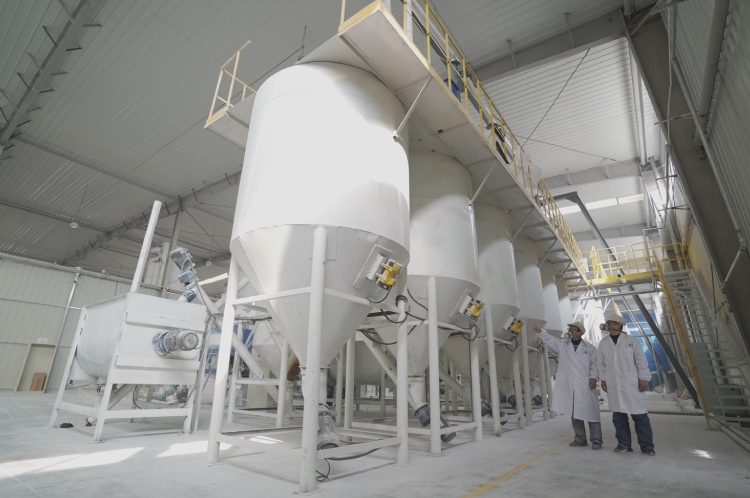Top Industrial Uses of Magnesium Oxide (MGO) | Key Applications Explained
Discover the main industrial uses of magnesium oxide (MGO) — from steel and ceramics to construction and agriculture. Learn why it’s vital across industries.

Uses of Magnesium Oxide in Industry
Ever looked at a bag of оксид магния and wondered, “What exactly is this white powder used for?”
You’re not alone — most people think of magnesium oxide only as an antacid.
But in industry, it’s one of the most versatile and valuable compounds out there.
Let’s break down the main uses of magnesium oxide in industry, how it works, and why it’s everywhere — from steel plants to agriculture.
What Is Magnesium Oxide (MGO)?
Before diving into the uses, let’s get clear on what we’re talking about.
Оксид магния (MGO) is a white, odorless, alkaline powder made by heating Магний карбонат (Mgco₃) or Гидроксид магния (Мг(ОЙ)₂) at high temperatures.
This process is called calcination.
Depending on how it’s made, MgO comes in three main grades:
Light-burned MgO – reactive, used in agriculture and water treatment
Hard-burned MgO – less reactive, used in ceramics and refractories
Dead-burned MgO – dense and heat-resistant, used in steel and furnace linings
1. Magnesium Oxide in the Steel Industry
The Backbone of Refractory Materials
If there’s one place оксид магния shines, it’s inside a blast furnace.
MgO is used to make refractory bricks and crucibles — materials that can withstand extreme heat (over 2000°C) without melting or breaking down.
These refractory linings protect equipment in:
Steelmaking furnaces
Cement kilns
Glass tanks
Non-ferrous metal smelters
Why MgO works so well:
High melting point (2800°C)
Excellent thermal stability
Resistance to chemical corrosion
Without magnesium oxide, furnace linings would crack and fail long before production ends.
2. Environmental and Chemical Applications
Cleaning Up Industrial Waste
Magnesium oxide is a powerful neutralizing agent.
In chemical processing and environmental management, it helps control acidity и remove impurities.
Common uses include:
Flue gas desulfurization – removing sulfur dioxide (SO₂) from power plant emissions
Wastewater treatment – neutralizing acids and heavy metals
Soil stabilization – balancing pH for agriculture or construction
Because MgO reacts with acids to form magnesium salts and water, it’s an eco-friendly option for reducing pollution.
3. Construction and Building Materials
Fire-Resistant and Durable Boards
If you’ve ever seen magnesium oxide boards (MGO boards) used in green construction, you’ve already met this material.
They’re used for:
Wall panels and ceilings
Underlayment for flooring
Fireproofing applications
Benefits of MGO boards:
Non-combustible (they won’t burn like wood or gypsum)
Moisture-resistant
Mold-resistant
Sound-insulating
Many builders are switching to MGO boards for sustainable construction because they’re lighter, durable, and contain no asbestos.
4. Ceramics, Glass, and Electrical Applications
A Key Ingredient in High-Temperature Products
Magnesium oxide improves thermal and electrical insulation, making it valuable for ceramics, glass, and electronics.
Used for:
Porcelain insulators
Electrical heating elements (like in ovens and water heaters)
Optical glass и ceramic glazes
In these applications, MgO controls viscosity, melting point, и chemical resistance, giving manufacturers precise control over product performance.
5. Agriculture and Animal Feed
Helping Plants and Animals Stay Healthy
In agriculture, magnesium oxide plays a gentler but equally important role.
It’s added to animal feed to correct magnesium deficiency in livestock (especially dairy cows).
It helps stabilize soil pH, improving nutrient absorption for plants.
It serves as a source of magnesium fertilizer for crops grown in acidic soil.
MgO’s slow solubility means nutrients are released gradually — reducing runoff and improving long-term soil health.
6. Pharmaceuticals and Personal Care Products
Beyond Industry — Into Everyday Life
Even outside heavy industry, MgO is used to make:
Antacids (neutralize stomach acid)
Laxatives (magnesium hydroxide forms in the body)
Cosmetics and deodorants (absorbs moisture and oil)
In these settings, it’s prized for being safe, stable, and cost-effective.
Short Story: The Furnace Fix
A client once told me their steel furnace lining kept failing every few months.
They were using silica-based materials.
We switched their design to a magnesia-based refractory — built with high-purity magnesium oxide.
The result?
The lining lasted five times longer, saving thousands in maintenance downtime.
That’s how I learned firsthand: in industrial heat, nothing beats MgO.
Why Industries Prefer Magnesium Oxide
Here’s the quick summary:
| Property | Benefit |
| High melting point | Survives extreme heat |
| Chemical stability | Resists corrosion |
| Electrical insulation | Ideal for electronics |
| pH control | Neutralizes acids |
| Sustainability | Non-toxic and recyclable |
Few materials offer such a broad performance range across multiple sectors.
FAQs About the Uses of Magnesium Oxide in Industry
- Why is magnesium oxide used in steelmaking?
Because it can withstand extremely high temperatures and chemical corrosion, making it perfect for refractory linings.
- Is magnesium oxide environmentally friendly?
Yes. It’s non-toxic, recyclable, and often used in pollution control systems like flue gas treatment.
- What’s the difference between light-burned and dead-burned magnesium oxide?
Light-burned MgO is reactive and used in agriculture or chemical industries.
Dead-burned MgO is dense and heat-resistant, used for refractories.
- Can magnesium oxide replace cement?
In some applications, yes. MGO boards and MGO-based cements are fire-resistant and eco-friendly alternatives to Portland cement.
- Where is magnesium oxide sourced from?
It’s produced from natural magnesium carbonate (magnesite) or from seawater-derived magnesium hydroxide.
Final Thoughts
From steel furnaces to eco-friendly construction, the uses of magnesium oxide in industry are vast and growing.
Its mix of thermal endurance, chemical resistance, and versatility makes it a true workhorse material.
Whether you’re in metallurgy, construction, or environmental engineering, chances are magnesium oxide already plays a part in your operations — quietly holding everything together.
In short:
Magnesium oxide is one of the most valuable industrial materials on the planet — and its uses in industry keep expanding every year.
 Магний оксид_магний гидроксид_магний, производитель карбоната-группа
Магний оксид_магний гидроксид_магний, производитель карбоната-группа


